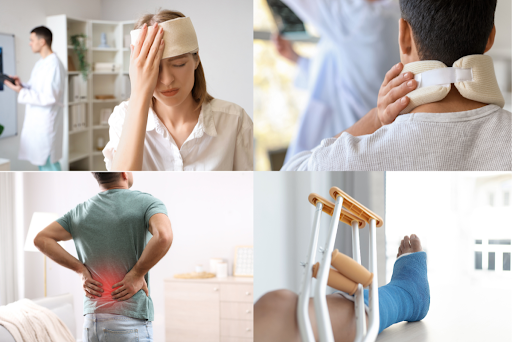Accidents can occur within seconds, leaving one with physical injuries, emotional stress, and financial burden. Many of these accidents, whether from a fall at home or from a car accident on the road, could have been prevented with simple precautions.
It’s very important to know your rights if an accident occurs because of someone else’s carelessness. The best personal injury lawyer will help you get justice and compensation.
Here are some tips to help you stay safe and avoid getting injuries.
Prevent Falls
Falls remain one of the most common causes of accidental injuries, especially at home.
To reduce this risk, focus on safety in staircases by ensuring that handrails extend the full length of each staircase and are securely fastened.
Loose carpeting or rugs on stairs should be fixed with non-slip backing at all times or replaced for your safety. Proper lighting is very crucial.
Well-lit stairs and hallways can minimize the risk of falls by a great degree. Place non-slip pads or double-sided carpet tape under rugs to keep them firmly in place.
Unsecured rugs are a sure way to slip and fall, which results in injuries that are completely avoidable.
Practice Road Safety
Road accidents can often be prevented by staying alert and adhering to safety rules.
Whether you’re driving or walking, remain vigilant at all times. Drivers should always wear seat belts, observe speed limits, and avoid distractions like using mobile devices while behind the wheel.
Routine vehicle maintenance, such as checking tires and brakes, ensures your car is in good working condition. Pedestrians should use designated crosswalks and be cautious of traffic, especially at night or in bad weather.
Maintain a Safe Outdoor Space
Your home’s exterior can pose safety risks if not properly maintained.
Regularly inspect outdoor areas such as sidewalks, decks, and pathways for hazards like uneven surfaces or loose railings, and make necessary repairs promptly.
During winter, clear walkways of snow and ice to prevent slips.
Additionally, clutter should be removed, and overgrown plants should be trimmed, which could obstruct pathways or create tripping hazards.
Ladder and Tool Safety
The habit of standing on chairs, tables, or other makeshift furniture to reach high places is very dangerous. Always use a ladder for such tasks, as it is designed for stability and safety. Set the ladder on a flat, stable surface and follow the weight limits recommended by the manufacturer.
Do not overreach from a ladder, which could cause it to tip. Similarly, tools should be used appropriately by observing safety precautions and wearing protective gear where necessary to prevent accidents.
Fire and Carbon Monoxide Protection
Fire and carbon monoxide poisoning can be life-threatening but are preventable with the right measures in place. Install smoke and carbon monoxide detectors in your home, ideally in sleeping areas and near potential fire sources. Regularly test these detectors, replacing the batteries at least once a year, or as needed.
Keep fire extinguishers in accessible locations, particularly in the kitchen and near heating equipment, and ensure everyone in the household knows how to use them effectively.
Bathroom and Shower Safety
Bathrooms can be especially hazardous due to wet surfaces. Install grab bars in showers and tubs to provide extra support, particularly for older adults or individuals with mobility challenges.
Non-slip mats or adhesive strips on shower floors can also prevent slips and falls. Consider using shower chairs for added safety and convenience during bathing.
Emergency Preparedness
Emergencies can happen at any time, so it’s crucial to have a well-stocked emergency kit in your home. Include items such as a first aid kit, flashlights with extra batteries, non-perishable food, and bottled water to prepare for power outages or natural disasters.
Familiarize all household members with the location and contents of the kit, and keep it updated with fresh supplies as needed.






